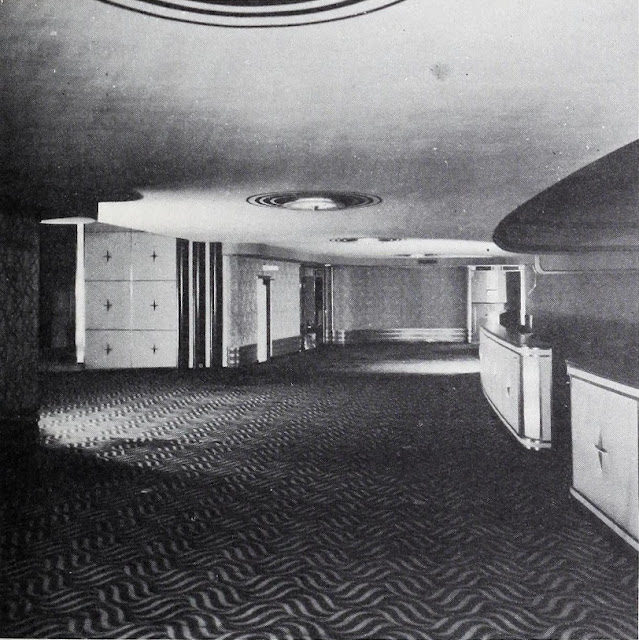West Side Rag, March 20, 2022:
"Metro Theatre will be a 'community entertainment center' with multiple restaurant-theatres and much more."
Newspaper articles refer to it as an art deco cinema but the interior was demolished in 2006 to prepare the space for retail use.
David Dunlap, New York Times, November 14, 2007:
"the inside, visible to passers-by on a recent afternoon, has been
gutted. Gone are seats and plaster and curtains and screen. Gone is a
golden ceiling molding with a chain of floral bouquets. Gone are the sylph-filled niches. Gone is grille work that sprouted like corn stalks."
The Metro, 2626 Broadway, opened in 1933 as the Midtown, part of Ochs circuit of theatres.
The New York State Exhibitor, June 10, 1933:
"Midtown theatre, new Lee Ochs house, opened the past weekend. Sam Chernow managing. House seats 600."
The New York State Exhibitor, June 25, 1933:
"the Ochs circuit signalized the opening of its new Midtown theatre by covering the vicinity of the new house with a twelve-color display done in ADC's multi-color process."
Motion Picture Herald, October, 21, 1933:
"The façade- its terra cotta and aluminum pattern by day and its illuminate effect with floods and tubes at night."
 |
| "The auditorium as seen from the stadium." |
"The Midtown is of the stadium type, with the 590 seats distributed equally between the stadium section and forward area, each of which contains 14 rows."
Motion Picture Herald, September 22, 1934:
Midtown "is one of the newest theatres which afford suggestions for the modernization of older theatres."In the lobby, the walls are covered with Formica sheets in horizontal bands of rich red inlaid with 2 inch strips of black at the edges."
New York Post
The Real Deal
Cinema Treasures
Since 1997 theatre historian, Cezar Del Valle, has conducted a popular series of theatre talks and walks, available for historical societies, libraries, senior centers, etc. The first two chosen 2010 OUTSTANDING BOOK OF THE YEAR by the Theatre Historical Society. Final volume published in September 2014. Currently seeking funding for “Editing & Formatting” the first three volumes of the Brooklyn Theatre Index, 3rd Edition







.jpg)
.jpg)














